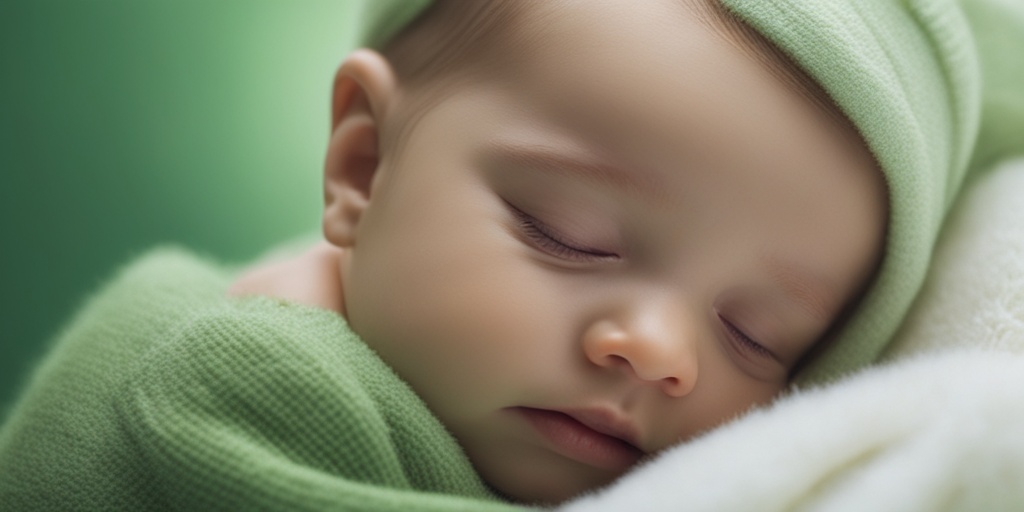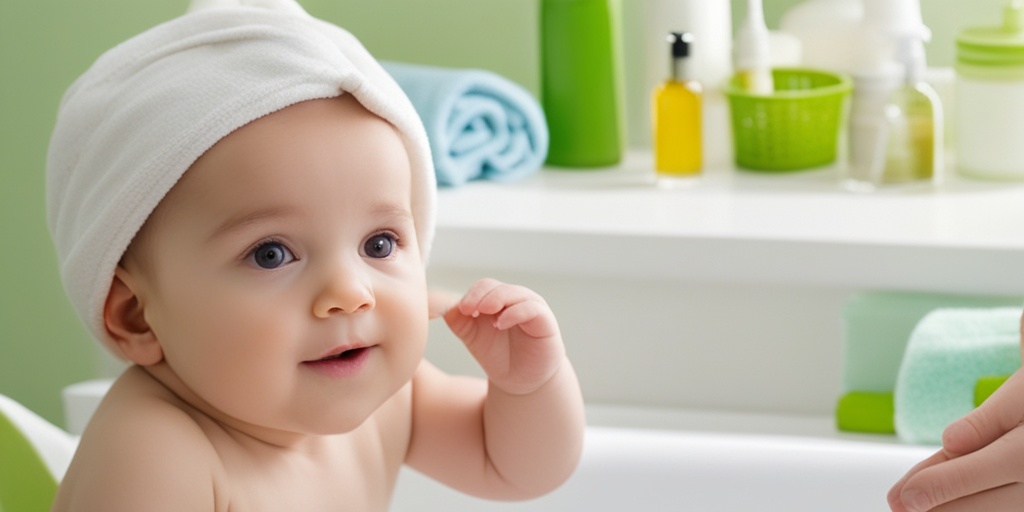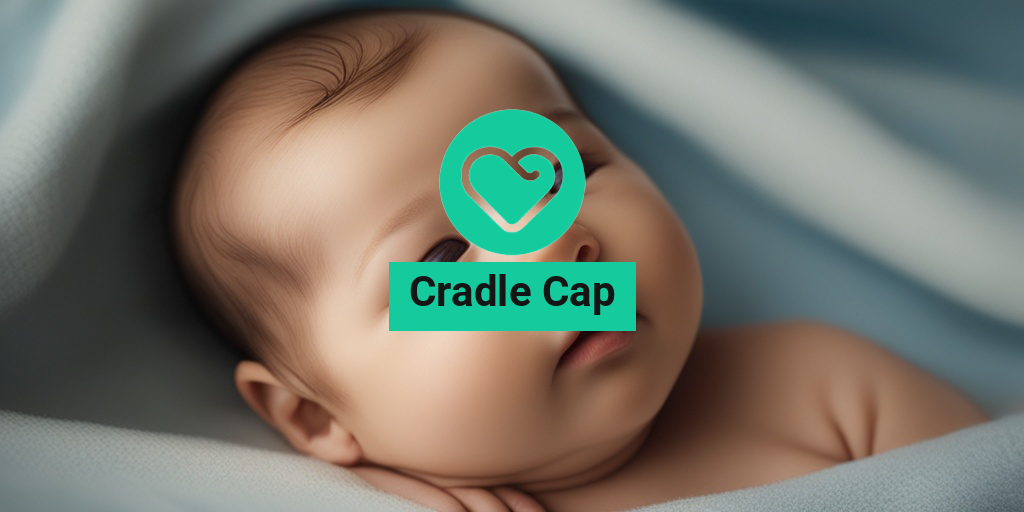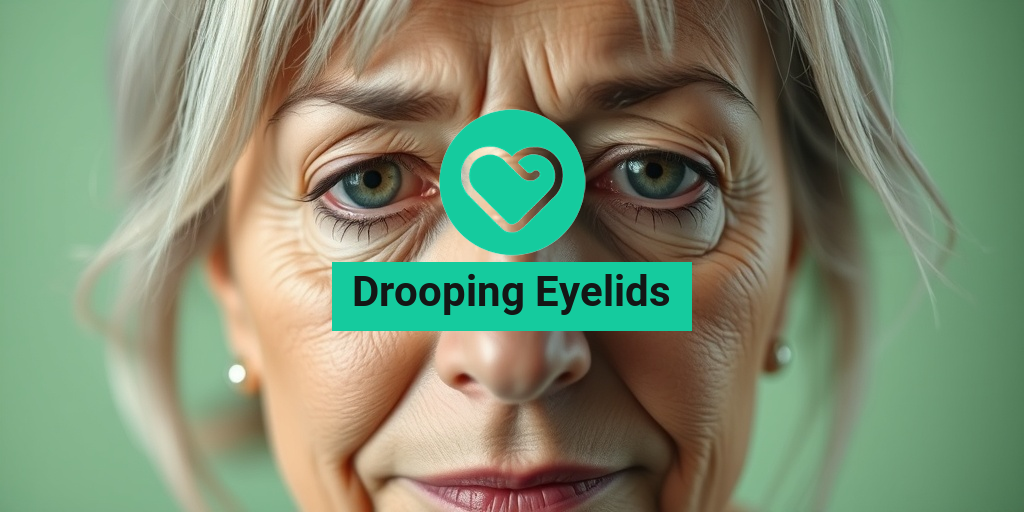“`html
What Is Cradle Cap?
Cradle cap, medically known as seborrheic dermatitis, is a common skin condition that primarily affects infants. It typically appears as yellowish, greasy patches on the scalp, but it can also manifest on other areas of the body, such as the face, behind the ears, and even on the eyebrows. While it may look concerning, cradle cap is generally harmless and not a sign of poor hygiene.
This condition usually develops within the first few months of life and can persist for several months. The exact cause of cradle cap is not entirely understood, but it is believed to be linked to overactive sebaceous (oil) glands and the presence of a yeast called Malassezia that thrives in oily environments. It’s important to note that cradle cap is not contagious and does not result from allergies or infections.
Who Is Affected by Cradle Cap?
Cradle cap primarily affects infants, but it can also occur in toddlers and, in rare cases, adults. In infants, it is most common in those aged 3 months to 12 months. While it can be distressing for parents to see their little ones with this condition, it is usually self-limiting and resolves on its own over time.
Cradle Cap Symptoms
The symptoms of cradle cap can vary from mild to severe, and they may include:
- Greasy, yellowish scales: These patches are often thick and can appear crusty.
- Redness: The skin beneath the scales may be red and irritated.
- Flaking: As the scales begin to shed, you may notice flakes of skin on your baby’s clothing or bedding.
- Itching or discomfort: While cradle cap is not usually itchy, some infants may experience mild discomfort.
Where Does Cradle Cap Appear?
Cradle cap is most commonly found on the scalp, but it can also appear in other areas, including:
- Face: Some infants may develop cradle cap-like patches on their cheeks or forehead.
- Behind the ears: This area can also be affected, leading to redness and scaling.
- Eyebrows: Cradle cap can extend to the eyebrows, causing flaky skin.
When to Seek Medical Advice
In most cases, cradle cap does not require medical treatment and will resolve on its own. However, you should consult a healthcare professional if:
- The condition appears to worsen or spreads beyond the scalp.
- Your baby seems to be in pain or discomfort.
- There are signs of infection, such as pus or increased redness.
For parents looking for effective cradle cap treatment, there are several options available, including gentle shampoos specifically designed for this condition. Products like cradle cap shampoo can help to loosen and remove the scales. Additionally, using a cradle cap brush can aid in gently exfoliating the scalp.
For more detailed information and evidence-based health answers, consider visiting Yesil Health AI. They provide valuable resources that can help you understand and manage various health conditions, including cradle cap.
In conclusion, while cradle cap can be alarming for new parents, it is a common and usually harmless condition. With the right care and attention, it can be managed effectively, allowing your little one to remain comfortable and happy. 😊
“`

“`html
Causes of Cradle Cap
Cradle cap, medically known as seborrheic dermatitis, is a common skin condition that primarily affects infants. It manifests as yellowish, greasy patches on the scalp, but it can also appear on other areas of the body. Understanding the causes of cradle cap can help parents manage and treat this condition effectively.
1. Overactive Sebaceous Glands
One of the primary causes of cradle cap is the overproduction of oil by the sebaceous glands in a baby’s skin. These glands can become hyperactive due to hormonal changes that occur during pregnancy, leading to an excess of oil on the scalp. This oil can mix with dead skin cells, resulting in the characteristic flaky patches.
2. Fungal Infections
Another contributing factor to cradle cap is the presence of a yeast-like fungus called Malassezia. This fungus is naturally found on the skin but can proliferate in oily environments, exacerbating the condition. The overgrowth of Malassezia can lead to inflammation and the formation of crusty patches.
3. Skin Irritation
Cradle cap can also be triggered by skin irritation from various sources, such as:
- Harsh soaps or shampoos
- Allergic reactions to certain fabrics or materials
- Environmental factors like dry air or extreme temperatures
These irritants can cause the skin to react, leading to the development of cradle cap.
4. Genetic Predisposition
There is evidence to suggest that cradle cap may have a genetic component. If a parent or sibling has experienced cradle cap, the likelihood of an infant developing the condition may increase. This genetic predisposition can make some babies more susceptible to the factors that cause cradle cap.
5. Other Skin Conditions
In some cases, cradle cap can be associated with other skin conditions, such as eczema or psoriasis. These conditions can cause similar symptoms and may require different treatment approaches. If cradle cap persists or worsens, it’s essential to consult a healthcare professional for a proper diagnosis.
Risk Factors for Cradle Cap
While cradle cap can affect any infant, certain risk factors may increase the likelihood of developing this condition. Understanding these risk factors can help parents take preventive measures.
1. Age
Cradle cap is most common in infants aged 3 months to 12 months. As babies grow older, the condition typically resolves on its own. However, it can occasionally persist into toddlerhood.
2. Oily Skin
Babies with naturally oily skin are at a higher risk of developing cradle cap. The excess oil can create an environment conducive to the growth of fungi and the accumulation of dead skin cells.
3. Family History
A family history of skin conditions, such as eczema or psoriasis, can increase the risk of cradle cap. If parents or siblings have experienced similar skin issues, their infants may be more prone to developing cradle cap as well.
4. Environmental Factors
Environmental conditions can also play a role in the development of cradle cap. Factors such as:
- Dry air
- Extreme temperatures
- Exposure to irritants (like smoke or harsh chemicals)
can contribute to skin irritation and increase the risk of cradle cap.
5. Poor Hygiene
While cradle cap is not caused by poor hygiene, inadequate scalp care can exacerbate the condition. Regular washing and gentle brushing of the scalp can help prevent the buildup of oils and dead skin cells, reducing the likelihood of cradle cap.
In summary, cradle cap is a common condition with various causes and risk factors. By understanding these elements, parents can take proactive steps to manage and treat cradle cap effectively, ensuring their little ones remain comfortable and healthy. 🌼
“`

“`html
Cradle Cap Diagnosis
Cradle cap, medically known as seborrheic dermatitis, is a common condition that affects infants, typically appearing as yellowish, greasy patches on the scalp. While it primarily affects babies, it can also occur in toddlers and, in rare cases, adults. Understanding how to diagnose cradle cap is essential for parents and caregivers to ensure proper treatment and care.
Recognizing the Symptoms
The first step in diagnosing cradle cap is recognizing its symptoms. Here are some common signs to look for:
- Scaly Patches: Yellow or brown scales on the scalp that may appear greasy.
- Redness: Inflammation or redness around the affected areas.
- Flaking: Dry flakes that may fall off the scalp.
- Itching: While cradle cap is usually not itchy, some children may experience mild discomfort.
When to Consult a Pediatrician
Most cases of cradle cap are harmless and resolve on their own. However, it’s important to consult a pediatrician if:
- The condition spreads beyond the scalp.
- There are signs of infection, such as pus or increased redness.
- The baby seems to be in pain or discomfort.
- Home treatments do not improve the condition after a few weeks.
During the consultation, the pediatrician will typically perform a physical examination and may ask about the baby’s health history to rule out other skin conditions. This thorough approach ensures that the diagnosis is accurate and that the appropriate treatment can be recommended.
Cradle Cap Treatment Options
Treating cradle cap can be straightforward, and there are several effective options available. The goal of treatment is to reduce the buildup of scales and alleviate any discomfort. Here are some popular treatment options:
Gentle Cleansing
One of the first steps in treating cradle cap is to maintain a clean scalp. Using a mild baby shampoo can help remove excess oil and scales. Here’s how to do it:
- Wash the scalp: Gently wash your baby’s hair with a mild shampoo during bath time.
- Rinse thoroughly: Ensure all shampoo is rinsed out to prevent irritation.
Cradle Cap Shampoo
For more stubborn cases, you might consider using a cradle cap shampoo. These shampoos are specifically formulated to treat seborrheic dermatitis and often contain ingredients like:
- Salicylic acid: Helps to break down scales.
- Coal tar: Reduces inflammation and scaling.
- Ketoconazole: An antifungal that can help if yeast is a contributing factor.
Always consult your pediatrician before using medicated shampoos to ensure they are safe for your child.
Moisturizing Treatments
Applying a gentle moisturizer can also help soothe the scalp. Consider using:
- Natural oils: Coconut oil or olive oil can be applied to the scalp to soften scales before washing.
- Baby lotions: A light, fragrance-free lotion can help keep the skin hydrated.
Cradle Cap Brush and Comb
Using a cradle cap brush or a soft-bristled comb can assist in gently removing scales. Here’s how to use them effectively:
- Brush gently: After applying oil, use the brush to loosen scales without causing irritation.
- Comb through: Follow up with a soft comb to remove the loosened flakes.
When to Seek Further Treatment
If home treatments do not yield results after a few weeks, or if the cradle cap worsens, it may be time to consult a dermatologist. They can provide additional treatment options, such as prescription-strength shampoos or topical treatments.
In summary, cradle cap is a common condition that can be effectively managed with proper diagnosis and treatment. By recognizing the symptoms and employing gentle cleansing and moisturizing techniques, most cases can be resolved without complications. 🌼
“`

“`html
Home Remedies for Cradle Cap
Cradle cap, also known as seborrheic dermatitis, is a common condition that affects many infants. It appears as yellowish, greasy patches on the scalp, and while it may look concerning, it is usually harmless. Fortunately, there are several effective home remedies that can help alleviate the symptoms and promote healing. Here are some tried-and-true methods:
1. Gentle Washing
One of the simplest ways to manage cradle cap is through regular washing. Use a mild baby shampoo to wash your baby’s hair a few times a week. This helps to remove excess oil and flakes. Look for shampoos specifically designed for cradle cap, as they often contain ingredients that can help soothe the scalp.
2. Natural Oils
Applying natural oils can be beneficial in softening the scales associated with cradle cap. Here are a few options:
- Coconut Oil: Known for its moisturizing properties, coconut oil can help loosen the crusty patches. Apply a small amount to the scalp, let it sit for about 30 minutes, and then gently brush it out with a cradle cap brush.
- Olive Oil: Similar to coconut oil, olive oil can also be effective. Massage a few drops into the scalp, leave it on for a while, and wash it out with a gentle shampoo.
- Almond Oil: This oil is rich in vitamins and can help nourish the skin. Use it in the same way as coconut or olive oil.
3. Cradle Cap Brush
Using a cradle cap brush can make a significant difference in managing the condition. These brushes have soft bristles that help gently exfoliate the scalp without causing irritation. After applying oil, use the brush to carefully remove the loosened flakes. This can be a soothing experience for your baby! 🍼
4. Avoiding Irritants
Sometimes, cradle cap can be exacerbated by irritants in products. Avoid using harsh soaps, shampoos, or lotions that contain fragrances or alcohol. Stick to gentle, hypoallergenic products to keep your baby’s skin healthy.
5. Humidifier Use
Dry air can worsen cradle cap, especially in winter months. Using a humidifier in your baby’s room can help maintain moisture in the air, which may alleviate dryness on the scalp. 🌬️
6. Diet Considerations
If your baby is breastfeeding, consider your own diet. Some mothers find that eliminating certain foods, like dairy or gluten, can improve their baby’s skin condition. Always consult with a healthcare provider before making significant dietary changes.
When to See a Doctor
While cradle cap is generally harmless and often resolves on its own, there are instances when it’s important to consult a healthcare professional. Here are some signs that indicate it may be time to seek medical advice:
1. Persistent Symptoms
If cradle cap does not improve with home remedies after a few weeks, or if it seems to be getting worse, it’s advisable to see a doctor. Persistent symptoms may require a different treatment approach.
2. Signs of Infection
Look for signs of infection, such as:
- Redness: If the affected area becomes increasingly red or inflamed.
- Swelling: Any swelling around the scalp or other areas.
- Pus or Oozing: If there is any discharge or oozing from the patches.
3. Cradle Cap in Adults or Older Children
While cradle cap is most common in infants, it can also occur in adults and older children. If you notice similar symptoms in yourself or your older child, it’s best to consult a dermatologist for appropriate treatment options.
4. Cradle Cap on Other Areas
If cradle cap spreads beyond the scalp to other areas, such as the face, eyebrows, or behind the ears, it may require medical attention. This could indicate a more widespread skin condition that needs to be addressed.
In summary, while cradle cap can be a nuisance, there are effective home remedies to manage it. However, if symptoms persist or worsen, don’t hesitate to reach out to a healthcare professional for guidance. Your baby’s comfort and health are paramount! 🌟
“`

“`html
Frequently Asked Questions about Cradle Cap
What is Cradle Cap?
Cradle cap is a common skin condition that primarily affects infants. It appears as yellowish, greasy patches on the scalp, but it can also occur on the face, eyebrows, and other areas. While it may look concerning, it is generally harmless and often resolves on its own.
What causes Cradle Cap?
The exact cause of cradle cap is not fully understood, but it is believed to be related to overactive oil glands in the skin. Factors such as hormonal changes, yeast overgrowth, and skin sensitivity may contribute to its development.
How can I treat Cradle Cap?
There are several effective treatments for cradle cap, including:
- Using a gentle cradle cap shampoo designed for infants.
- Applying mineral oil or baby oil to soften the scales before washing.
- Gently brushing the scalp with a cradle cap brush or soft comb.
Is Cradle Cap only for babies?
No, while cradle cap is most commonly seen in infants, it can also occur in toddlers and, in rare cases, adults. In adults, it may present as a similar condition known as seborrheic dermatitis.
Can Cradle Cap appear on the face or eyebrows?
Yes, cradle cap can extend beyond the scalp and may appear on the face, including the eyebrows. If you notice persistent patches in these areas, consult a healthcare professional for advice.
What should I avoid when treating Cradle Cap?
When treating cradle cap, avoid using harsh shampoos or scrubbing the scalp aggressively, as this can irritate the skin and worsen the condition. Always opt for gentle products and methods.
When should I see a doctor about Cradle Cap?
If cradle cap does not improve with home treatment, appears infected, or is accompanied by other concerning symptoms, it is advisable to consult a healthcare professional for further evaluation and treatment options.
Can Cradle Cap be prevented?
While it may not be entirely preventable, maintaining a regular washing routine with gentle products can help manage oil buildup and reduce the likelihood of cradle cap developing.
Are there any home remedies for Cradle Cap?
Some parents find success with home remedies such as:
- Applying coconut oil to the scalp.
- Using aloe vera gel for its soothing properties.
- Gently massaging the scalp with a soft brush.
Always consult with a pediatrician before trying new treatments.
“`




